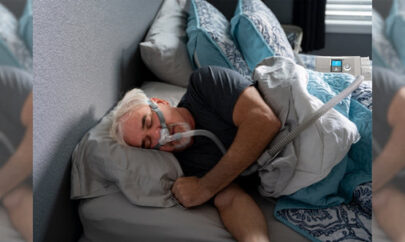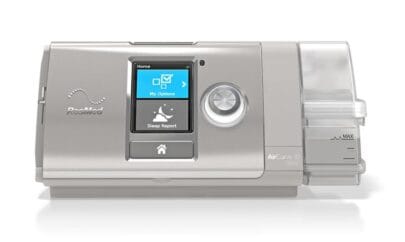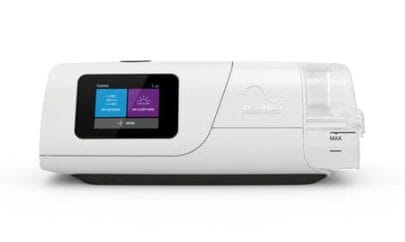
BiPAP Titration for Neurological and Cardiac Cases
BiPAP (Bilevel Positive Airway Pressure) therapy is used in the management of obstructive sleep apnea (OSA) and other sleep-related breathing disorders. It works by delivering air at two different pressure levels during inhalation and exhalation, allowing patients to breathe more easily during sleep.
Finding the optimal pressure settings can be challenging, especially in patients with neurological or cardiac conditions. To find the optimal inspiratory positive airway pressure (IPAP) and expiratory positive airway pressure (EPAP), the healthcare provider will need to carry out a BiPAP titration study. This will help determine the optimal pressures that are needed for effective therapy and minimal side effects.
A BiPAP titration study can be carried out in an AASM-accredited sleep center by registered polysomnographic technologists. They will try to find the optimal IPAP and EPAP to manage and alleviate the symptoms of sleep-related breathing disorders while also ensuring that oxygen saturation stays above 90%.
To set up the device, manufacturer’s guidelines and prior sleep study data will be followed, and adjustments will be made to reduce the respiratory disturbance index (RDI) – to achieve less than 5 per hour during REM sleep – while the patient is lying on their back. This is the stage of sleep where airway obstruction is most likely to occur. In neurological and cardiac patients, specific modifications such as switching to spontaneous-timed (ST) mode or adjusting pressure settings may be necessary to avoid worsening the condition. This is why a BiPAP titration is very important, ensuring that the patient is receiving safe and effective treatment, which meets their individual requirements.
Specific Conditions Requiring BiPAP
Optimal BiPAP therapy is essential for cardiac or neurological patients who suffer from sleep-related breathing disorders such as OSA, to prevent worsening of their symptoms. However, adherence to the therapy can prove to be difficult in patients with neurological disorders such as epilepsy and other similar conditions.
Patients suffering from psychosocial stressors and mood disorders can be less reluctant to fully adhere to the therapy, especially in the first few months, and therefore symptoms are still present or can worsen despite ongoing treatment.
Some patients can develop treatment-emergent central sleep apnea (TECSA). This occurs when a patient develops central sleep apnea during the treatment of OSA – which occurs in 5 to 15% of patients undergoing PAP titration for OSA. TECSA is temporary and often resolves after the first few months of BiPAP therapy.
Adjusting BiPAP Settings for Neurological Patients
Adjusting BiPAP settings for neurological patients requires a personalized approach. It is the preferred option to CPAP therapy, which provides air at a constant high pressure throughout the night, and can cause discomfort and other side effects. By customizing the IPAP and EPAP settings, symptoms of OSA and other sleep-related respiratory disorders can be effectively reduced and alleviated, enabling a better night’s sleep and improved overall health and well-being. This is very important in patients with complex cases such as neurological disorders.
It is also important to monitor for signs of TECSA or complex apnea. If any signs are identified, then the BiPAP titration study may need to be repeated so that further adjustments can be made to the pressure settings. Factors such as mask fit and type of mask should also be taken into consideration when adjusting the pressure settings. In this way, the patient can enjoy the maximum benefits of the therapy with minimal complications.
The titration process should also consider how the patient’s neurological symptoms can affect sleep. For example, patients with Parkinson’s disease may have broken sleep, which could influence optimal BiPAP settings. A comprehensive approach that addresses both the sleep disorder and the underlying neurological condition is essential for successful BiPAP titration in these patients.
Cardiac Conditions Benefitting from BiPAP
BiPAP therapy can be highly beneficial for cardiac patients, especially those with conditions such as cardiogenic pulmonary edema (CPE), heart failure, and acute coronary syndromes. BiPAP helps improve oxygenation, making it easier to breathe, and may also improve cardiac function by reducing the heart’s workload.
For patients with CPE, BiPAP has been shown to improve oxygenation, lower respiratory rate, and decrease the need for intubation. The 3CPO trial, a multicenter randomized controlled study, revealed that both CPAP and BiPAP improved symptoms and gas exchange in CPE patients. Both methods were found to be equally effective as each other.
Optimal BiPAP Settings for Cardiac Patients
Several factors must be considered when conducting a BiPAP titration for a cardiac patient. Initial settings typically include an IPAP of 10 cmH2O and an EPAP of 5 cmH2O, but can vary from patient to patient. IPAP can be increased to reduce carbon dioxide levels in the blood, but it should not exceed 20 cmH2O to avoid complications. It is important to follow titration protocol to ensure safety and efficacy.
Monitoring the patient’s response to BiPAP is essential. This includes evaluating hemodynamics, blood gases, tidal volume, minute ventilation, and patient-ventilator interactions. It is important that the settings are adjusted accordingly to ensure patient comfort and avoid symptoms of respiratory distress such as difficulty breathing or shortness of breath.
A Closer Look at BiPAP Titration
Several case studies illustrate the complexity of BiPAP titration in neurological and cardiac patients.
Neurological Conditions
A notable case involves a 74-year-old woman with Multiple System Atrophy (MSA) who presented with sleep-disordered breathing (SDB) and developed Rapid Eye Movement Sleep Behavior Disorder (RBD) during CPAP titration. She showed symptoms of RBD, particularly at a pressure of 11 cm H2O. The setting was then adjusted accordingly to help manage these symptoms, highlighting the importance of how tailored adjustments can impact therapy outcomes.
It is important to monitor RBD symptoms during PAP titration in patients with neurological disorders, as these symptoms can affect treatment adherence and outcomes.
Another example is from a study on patients with epilepsy, where BiPAP was used to manage obstructive sleep apnea (OSA). The study found patients with epilepsy had poorer adherence to PAP therapy due to various psychosocial and clinical factors. Repeated BiPAP titration studies were necessary to improve adherence, underscoring the importance of knowing how to titrate BiPAP in patients with complex clinical profiles.
Cardiac Conditions
A study was carried out on ischemic stroke patients with sleep apnea. This study explored the use of auto-BiPAP and found that it was safe and well-tolerated. Although it did not show immediate therapeutic effect, the study suggested that long term use of auto-BiPAP treatment can be beneficial for stroke patients with severe sleep apnea.
In patients with heart failure, BiPAP has been shown to provide significant hemodynamic benefits. For instance, in patients with cardiogenic pulmonary edema (CPE), BiPAP can improve oxygenation, and reduce the need for intubation. It is advantageous in acute settings where immediate relief from respiratory distress is critical.
Careful Titration for Optimal Therapy
There are several factors to consider when conducting a BiPAP titration for patients with neurological or cardiac conditions. The titration process involves carefully adjusting inspiratory positive airway pressure (IPAP) and expiratory positive airway pressure (EPAP) for optimal therapeutic effect and minimal complications or respiratory distress. The patient’s specific clinical needs and preferences must be taken into consideration to ensure better adherence to the treatment.
It is important to start with lower pressures or follow the manufacturer’s guidelines, and gradually increase the IPAP and EPAP as required. By monitoring the patient’s response through arterial blood gases, and assessing their overall work of breathing the optimal pressure settings can be found.
For neurological patients, it is important to look out for signs of treatment-emergent central apneas which can often develop during PAP therapy for OSA. In cardiac patients, BiPAP therapy can help improve cardiac function, but again, careful titration is necessary for optimal therapeutic effect and minimal complications.
BiPAP therapy is effective in managing and alleviating the symptoms of sleep-related breathing disorders. With careful titration, BiPAP can help improve the overall health and well-being of patients with neurological and cardiac conditions in both hospital settings and at home. Staying updated with the latest clinical guidelines and working collaboratively within a multidisciplinary team are essential for ensuring the best possible care.










